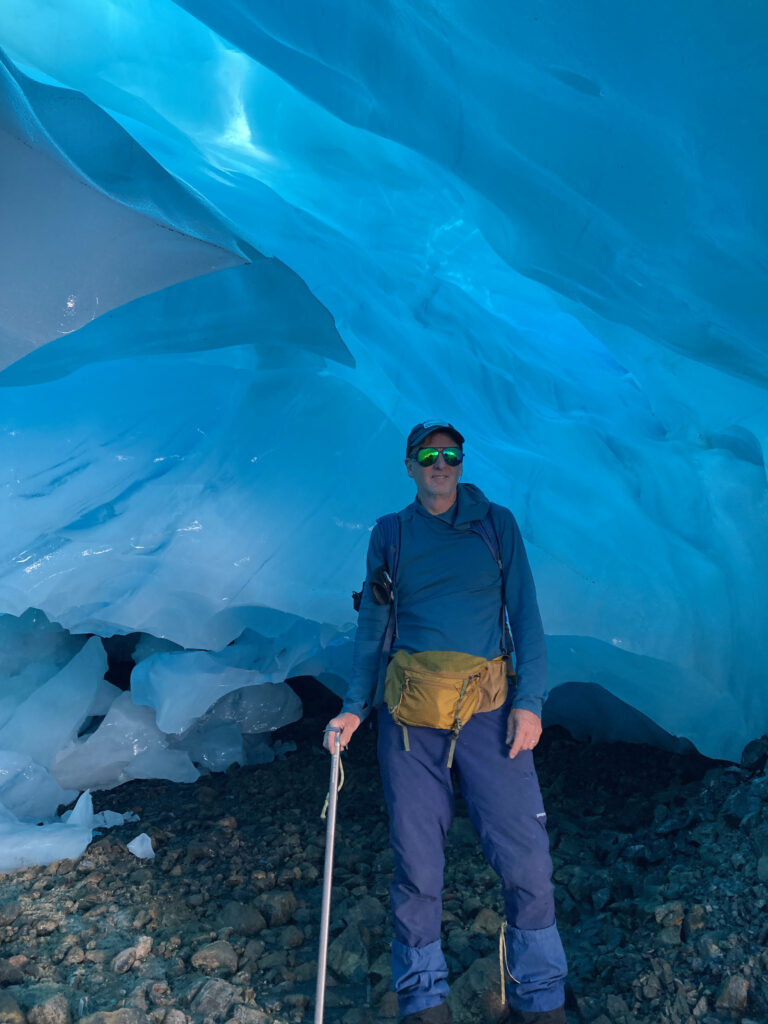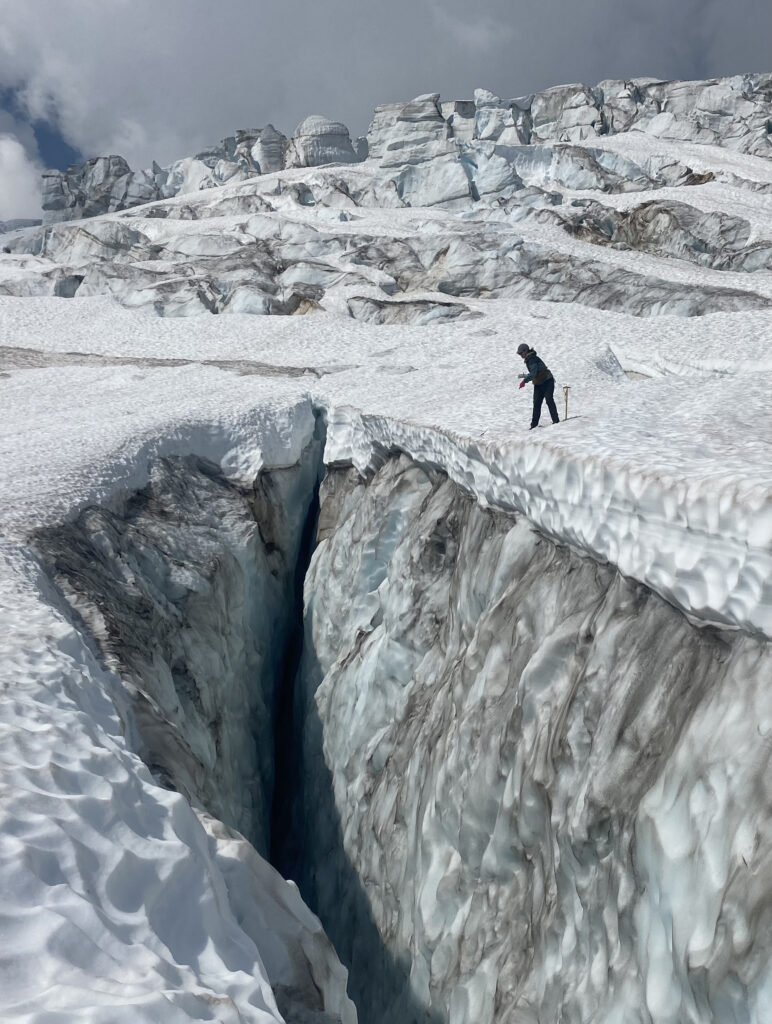NCGCP began monitoring North Cascade glaciers in 1984 to identify the response of the glaciers and the streams they feed to regional climate change. We have completed our field research each summer for 41 consecutive years. Our annual 3-week field season focus is on glacier mapping, mass balance measurement, terminus observations and glacier runoff monitoring. We prioritize working with artists and journalists to communicate our research.
We rely on no permanent camps or equipment accessing all glaciers by backpack with no helicopter support. We are unusual in that we are a combined art and science team working toward one goal of observing and communicating the changes on the glaciers and the surrounding ecosystem. Our theory of changing perspective on the environment and climate change focusses on utilizing art and science together to better connect with people at an emotional level.
Mauri Pelto-Science Director

Dr. Pelto has been a professor of environmental science at Nichols College and the director of the North Cascades Glacier Climate Project for 39 years. Pelto’s science research team has recorded the mass balance of numerous glaciers, all of which are retreating due to global warming, which has raised temperatures; which in turn has increased melting and increased the frequency of winter rain and melt events that reduce winter accumulation on North Cascade glaciers. This has led to the retreat of all 47 glaciers we monitor, with four of those glaciers having disappeared. The reduction in volume and area is reducing summer contributions to streamflow.
Jill Pelto-Art Director

Jill Pelto has spent 16 years working with the project and is an artist and scientist from New England who grew up loving winter sports and trips to the mountains. She incorporates scientific research and data into paintings and prints to communicate environmental changes. Her multi-disciplinary work weaves visual narratives that reveal the reality of human impacts on this planet. She completed both her B.A. degrees in Studio Art and Earth and Climate Science and her M.S. focused on studying the stability of the Antarctic Ice Sheet at the University of Maine, spending two field seasons at a remote camp in the southern Transantarctic Mountains.. She is excited about continuing to document the change in North Cascade glaciers that she has witnessed each of the last ten years — through science and art.